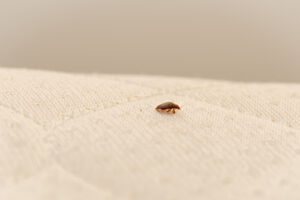Do you think that your dog or cat may have ticks or fleas? If you aren’t already experiencing warmer weather, Spring and Summer are just right around the corner. Regardless of the season though, if your pet spends any kind of time outdoors, they could be at risk of getting ticks or fleas.
Here are some more and less obvious ways that you can check your pets for ticks and fleas.
1) Check for Signs of Itching
One of the most obvious signs that your pet could have ticks or fleas is they are itching. Having ticks or fleas biting at and crawling on your pet’s skin causes itchiness and irritation. This will lead your pet to scratch themselves incessantly, and even biting at or around the points of irritation.
If you notice that your pet is excessively biting, gnawing, nibbling, or scratching themselves, there is a good chance that they have a tick or a flea problem.
2) Check for Missing Fur Patches
Normal pet shedding is one thing, but if you notice that your pet is missing large patches of fur you are dealing with a totally different problem. With the excessive scratching, biting, and itching your pet can rub off or deteriorate their fur in the places that they have been repeatedly itching. If your pet is missing patches of fur and scratching, there’s a high likelihood that they have some type of pest or parasite infestation.
3) Monitor Your Pet’s Behavior
Fighting a parasite infestation is exhausting for your pet. If you’ve noticed that they have been inordinately sluggish, tired, or lacking energy, this would be a good queue to take your buddy to the vet or check them for ticks and fleas.
4) Checking for Ticks and Fleas Manually
If your pet has been itching this way, we recommend using a flea comb for your pet. Look for any black or reddish specks. This can be indicative of what is known as “flea dirt” and is direct evidence that adult fleas leave on your pet. You can uncover flea dirt by rubbing your pet’s coat or the bed of their coat with a plain white paper towel.
Use your flea comb to comb slowly and softly around your pet’s head and ears, and work from their head and ears down to the rest of the body and the tail. If you see any white specks, there is a good chance that you’ve found some flea eggs. That’s a direct sign that your pet has a tick or flea infestation.
Think that you may have a pest infestation in your home? Contact our experts at Advantage Pest Control today.












